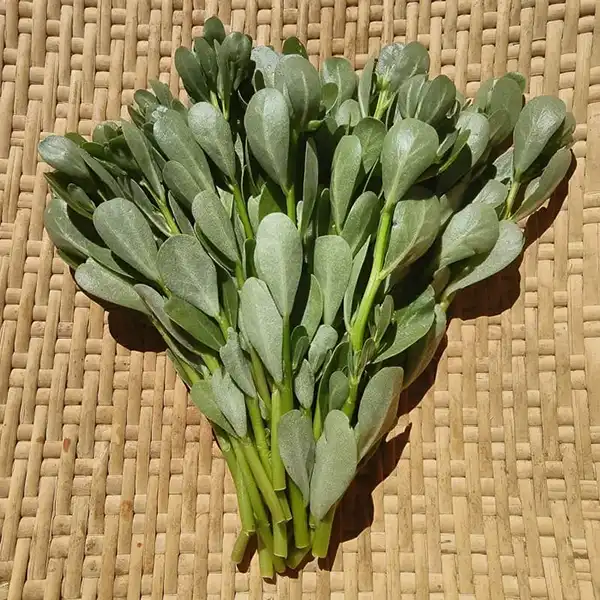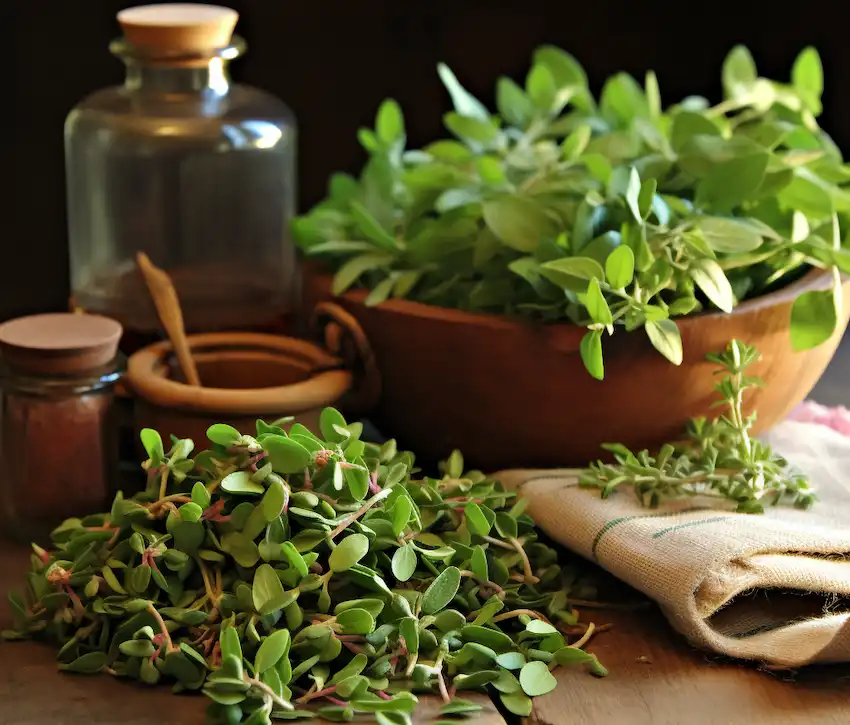Rediscovering a Forgotten Powerhouse
For centuries, common purslane (Portulaca oleracea) has been dismissed as a pesky weed in many parts of the world. Yet, this humble plant is a culinary and nutritional titan, boasting a flavor profile that rivals meat and a nutrient density that surpasses most animal products. With its tart, lemony crunch and unparalleled health benefits, common purslane is redefining what it means to eat sustainably and nutritively. This article explores why this ancient superfood deserves a prime spot on your plate—and how it might just make you rethink your relationship with meat.
The Nutritional Profile of Common Purslane: A Meat Alternative Like No Other
1. Omega-3 Fatty Acids: A Plant-Based Miracle
While meat is often lauded for its protein content, common purslane offers something most animal products lack: omega-3 fatty acids. In fact, it’s the richest land-based source of alpha-linolenic acid (ALA), a plant-based omega-3 linked to reduced inflammation, improved heart health, and enhanced brain function. A single serving contains 5–7 times more ALA than spinach, and it even provides trace amounts of EPA, a fatty acid typically found only in fish 2,7. For vegans or those avoiding seafood, common purslane is a game-changer.
2. Vitamins and Minerals: A Multivitamin in Leaf Form
Common purslane is a treasure trove of essential nutrients:
- Vitamin A: With 44% of the daily value (DV) per 100g, it supports eye health and immune function 11.
- Vitamin C: At 35% DV, it boosts collagen production and immunity 2,7.
- Magnesium and Potassium: Critical for muscle function, blood pressure regulation, and bone health 10,11.
- Iron and Calcium: Essential for blood health and strong bones, outperforming spinach in bioavailability 7,10.
Compared to meat, which lacks fiber and antioxidants, common purslane delivers a holistic nutrient package without cholesterol or saturated fats.
3. Antioxidants: The Cellular Shield
Packed with glutathione, melatonin, and betalains, common purslane neutralizes free radicals, reduces oxidative stress, and may lower cancer risk 16. Its antioxidant density eclipses even blueberries, making it a true longevity food.

Health Benefits: Why Common Purslane Trumps Meat
1. Heart Health: Beyond Cholesterol
While red meat is notorious for raising LDL (“bad”) cholesterol, common purslane actively improves cardiovascular health. Its omega-3s reduce triglycerides, while potassium and magnesium regulate blood pressure. Studies show it can lower LDL and raise HDL (“good”) cholesterol, offering protection against heart attacks and strokes 7,11.
2. Diabetes Management: A Natural Therapy
Common purslane has been shown to reduce fasting blood sugar and improve insulin sensitivity. In one trial, participants with type 2 diabetes who consumed purslane seeds saw results comparable to metformin, a common diabetes medication 610. Its high fiber content also slows glucose absorption, making it a superior choice to meat for metabolic health.
3. Bone Strength: Calcium Without the Dairy
With 7% DV of calcium and 17% DV of magnesium per serving, common purslane supports skeletal health more effectively than dairy or meat. These minerals work synergistically to prevent osteoporosis, a condition exacerbated by high-protein diets 11.
4. Cancer Prevention: Fighting Free Radicals
The betalains and flavonoids in common purslane exhibit anti-carcinogenic properties, inhibiting tumor growth in preclinical studies 1,6. Meat, particularly processed varieties, has been linked to colorectal cancer, whereas common purslane offers protective benefits.
5. Liver and Digestive Health
Common purslane aids detoxification by reducing oxidative stress in the liver. Its mucilaginous texture soothes the digestive tract, alleviating ulcers and inflammation—a stark contrast to meat, which can strain digestion 3,10.
Culinary Versatility: A Flavor That Rivals Meat
1. The Taste of Common Purslane: Bright and Umami-Rich
Described as a cross between spinach and watercress with a lemony zing, common purslane adds vibrancy to dishes. Its succulent leaves and stems provide a satisfying crunch, while its natural salinity enhances savory flavors, mimicking the umami depth of meat.
2. Global Recipes: From Tacos to Pesto
- Mexican Verdolagas: Braised with pork and salsa verde, common purslane balances rich meats with its acidity 8.
- Mediterranean Salads: Tossed with feta, olives, and olive oil, it creates a refreshing contrast to grilled proteins 9.
- Purslane Pesto: Swap basil for common purslane and walnuts for pine nuts to create a nutrient-dense sauce 10.
- Stir-Fries and Soups: Its texture holds up to heat, making it ideal for Asian-inspired dishes or hearty stews 5.
3. Meatless Marvels: Satisfying Even Carnivores
The hearty texture of common purslane makes it a standout in vegetarian tacos, lentil soups, and grain bowls. Unlike tofu or tempeh, it requires no processing, offering a whole-food alternative that’s both filling and flavorful.
Environmental and Ethical Advantages
1. Sustainable Cultivation
Common purslane thrives in arid, nutrient-poor soils, requiring minimal water or pesticides. Compared to livestock farming—a leading cause of deforestation and greenhouse gas emissions—it’s a climate-friendly crop.
2. Ethical Eating
Choosing common purslan.e over meat reduces reliance on factory farming, aligning with vegan and vegetarian ethics. Its abundance as a “weed” also makes it accessible to low-income communities.
Risks and Considerations
1. Oxalates: A Note for Kidney Health
Common purslane contains oxalates, which may contribute to kidney stones in susceptible individuals. Pairing it with calcium-rich foods (e.g., yogurt) can mitigate this risk 10.
2. Identification: Avoiding Toxic Look-Alikes
Spurge, a toxic mimic, exudes milky sap when stems are broken. Always verify common purslan.e by its red stems and lack of latex 9.
3. Moderation During Pregnancy
While nutrient-dense, pregnant individuals should consult healthcare providers due to limited safety data 10.

Conclusion: Embracing Common Purslane as a Dietary Staple
Common purslan.e isn’t just a weed—it’s a culinary revelation and a nutritional powerhouse. With its robust flavor, disease-fighting nutrients, and minimal environmental footprint, it outperforms meat in nearly every category. Whether you’re a committed vegan or a flexitarian, incorporating common purslane into your diet is a step toward healthier living and a more sustainable planet. As the ancient Greeks and traditional Chinese healers knew, this “vegetable for long life” is truly nature’s answer to modern dietary dilemmas.